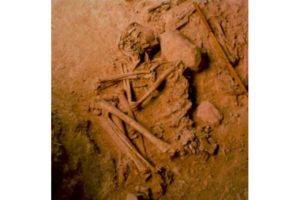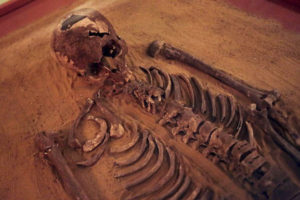The antiquity of European civilization has been underlined once again with the re-dating and discovery of more pieces of the famous Lion ManIce Age sculpture from Swabia, Germany, to an incredible 40,000 B.C.
The new dating method was made using a refined radio-carbon dating of other bones found in the strata around the original discovery site, which added 8,000 years to the original date of 32,000 BC.
The Lion Man, made of mammoth ivory, was first discovered in August 1939 at the back of the Stadel Cave in the Swabian Alps, south-west Germany. The fragments were first assembled in 1970 from around 200 pieces, making up a 30cm-tall (just short of 2 inches) sculpture.
More fragments were found and added to the sculpture in 1989, but the newest additions are an incredible 1,000 new pieces—some of them tiny—found following new excavations by German archaeologist Claus-Joachim Kind.
Some of the larger pieces are now being added to the figure, and, according to British Museum curator Jill Cook, the complete statue is now being reassembled virtually using computer-imaging techniques.
Even more importantly, the new dating technique has made the Lion Man one of the oldest sculptures in the world, dwarfing what has long considered to be the “cradle of civilization,” Bronze Age Mesopotamia which by comparison dates to “only” 5,000 years ago.
Art of the standard of the Lion Man is the product of a stable, established society, as it has been estimated (by making a replica) that it took about 400 hours to carve using flint tools. This means that the carver would have had to be looked after by hunter-gatherers, which presupposes a degree of social organization.+







